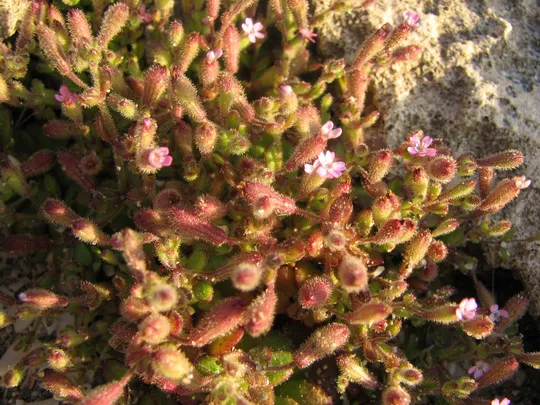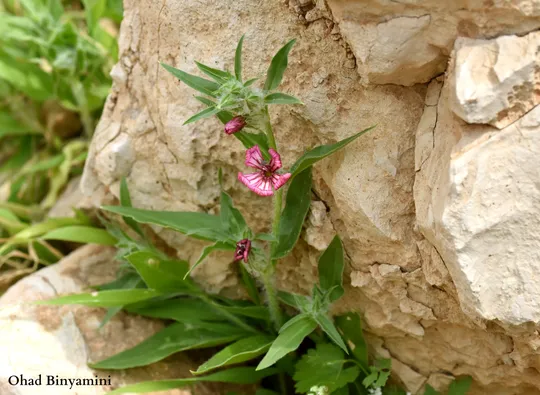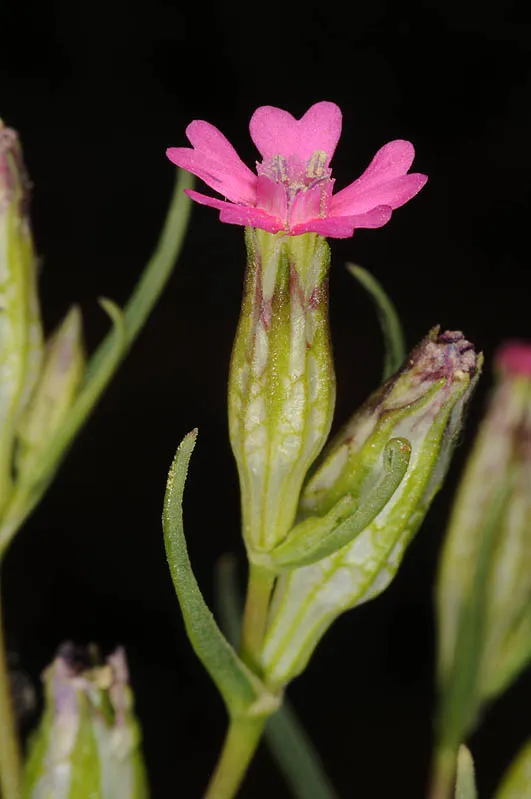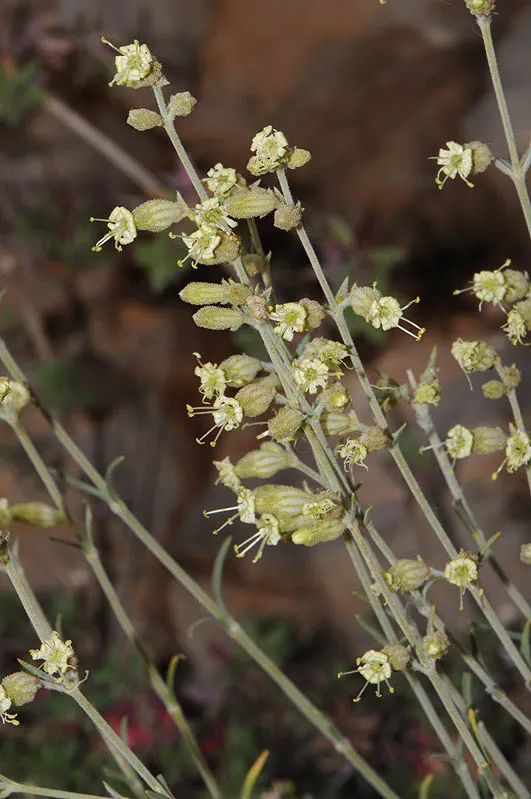Campion sp.
Silene chaetodonta
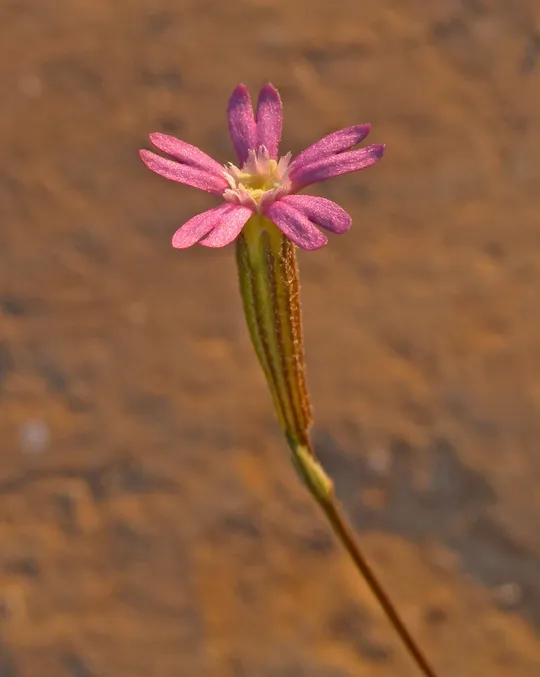
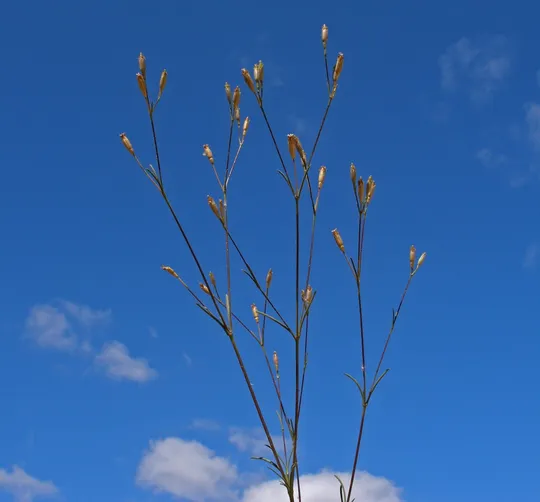
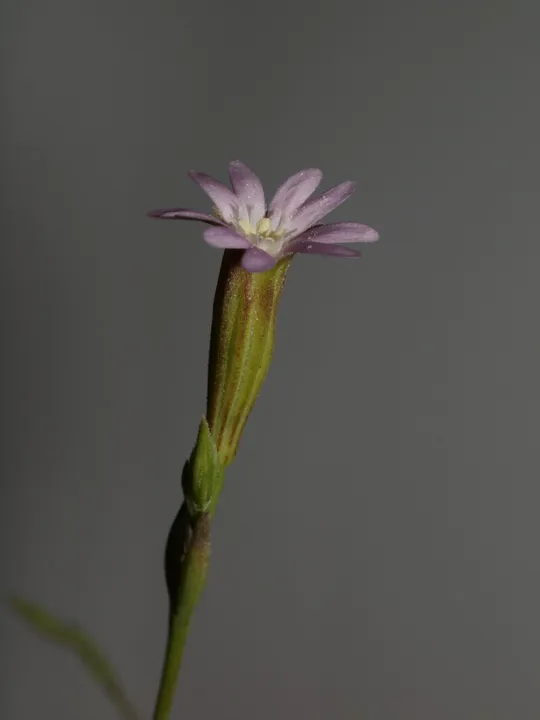
Silene modesta grows on about
60 sites in the coastal regions – the Acre Valley, Carmel Coast, Sharon and Pleshet.
In the Acre Valley, it was observed at Akhziv, in Nahariya and near the mouth
of the Kishon. On the Carmel Coast – at Atlit, Dor-HaBonim, and on the Ma'ayan Tsvi
coast. In the Sharon it is found at many sites – the Caesarea sands,
the sands of the Menashe sedimentation reservoir, the Sharon Park south of
Hadera, the Netanya sands, the IMI compound and the Ramat Aviv sands. S. modesta
is extinct from sites in the Sharon from which it was once collected in
Ra’anana, Magdiel and Herzliya. In Pleshet it grows on all the sandy areas –
Holon, Palmahim near lower Wadi Sorek, Yavne and Ashkelon. In Pleshet It also grows
in inland areas on calcareous sandstone – in the Rehovot-Gedera area and in the
Ruhama badlands. It is extinct in Gedera and in the dense urban areas of
northern Pleshet where it was once collected, e.g Ramat Gan, Bne Brak, the Borochov
neighborhood in Giv’atayim, and inside the city of Tel Aviv itself.
Coastal sands, disturbed sandy habitats and sandy and crumbly
calcareous sandstone, often as part of the herbaceous vegetation that
accompanies Artemisia monosperma and Reteam raetam shrublands.
The genus Silene has about 700 species commonly
found in the northern half of the globe particularly around the Mediterranean Basin.
A few species spread south to Africa. S. modesta belongs to the Rigidulae
section. The Silene species in this section are annuals with characteristically
branched rigid stems, often very thin and sticky on their upper part. The
inflorescence is a dichasium and its calyx is not inflated and does not have a
narrow neck. Species close to S. modesta in Israel are S.reinwardtii that has white flowers and is characteristic mainly
of the eastern Upper Galilee and the Hula Valley and is found in Israel and
Syria and S.linearis, a
common plant, with filiform stems and greenish-cream flowers that grows mainly
in the transition zone and throughout the Negev. S. modesta is one of the endemic
species of the coastal plain in Israel that have related species in other
regions.
·
The distribution of Silene modesta on the coastal
plain seems stable regarding the number of regions, but a significant decrease
in the number of sites is evident, particularly in large urban communities and
in their vicinity.
·
The populations usually have thousands
or tens of thousands of plants.
·
The coastal plain sandy habitat is highly
vulnerable and threatened by destruction, which endangers all the ecosystem
components, including S. modesta populations.
·
Some of the populations are protected in
nature reserves: in Akhziv, Dor-HaBonim Beach, near Ya'ar Pond, in the Palmahim
sands and in the Wadi Rubin National Park .
·
S. modesta is endemic to the narrow coastal
plain strip of Israel and Lebanon, consequently the local threat status is also
the global threat status.
Selected Silene modesta populations should
be monitored in each of the Coastal Plain regions and efforts should be made to
include additional sandy areas where the plant grows in nature reserves.
Silene modesta is endemic to
the coastal plain of Israel and Lebanon.
Silene modesta is an annual
plant of coastal plain sandy habitats. Is not very rare, but its habitat is under
constant threat of destruction and development. It is also endemic to Israel
and Lebanon, consequently the local threat status is equivalent to the global
threat. Within a narrow distribution range, the S. modesta populations in Israel are located in a
narrow range at the southern periphery of its global distribution area.
Current Occupancy Map
| 1000 squre meter pixel | 5000 squre meter pixel | 10000 squre meter pixel | |
|---|---|---|---|
| number of observations | 0 | 0 | 0 |
| in total pixels | 0 | 0 | 0 |
| Family | Caryophyllaceae |
| Classification | On the near threatened species list |
| Ecosystem | Mediterranean Coast |
| Chorotype | Eastern Mediterranean |
| Conservation Site | Caesarea Sands, Palmahim Sands |
| Rarity |
1
1
6
|
|---|---|
| Vulnerability |
0
2
4
|
| Attractiveness |
0
0
4
|
| Endemism |
0
2
4
|
| Red number |
1
3.2
10
|
| Peripherality | N |
| IUCN category | DD EW EX LC CR EN VU NT |
| Threat Definition according to the red book | Vulnerable |
 Based on:
Based on:
